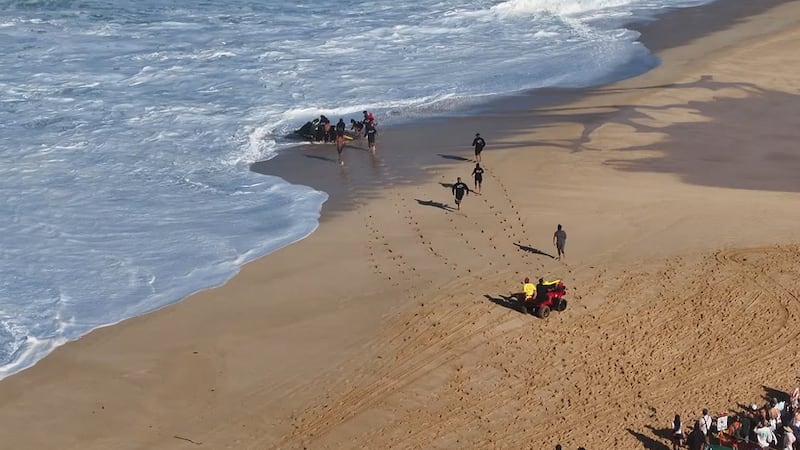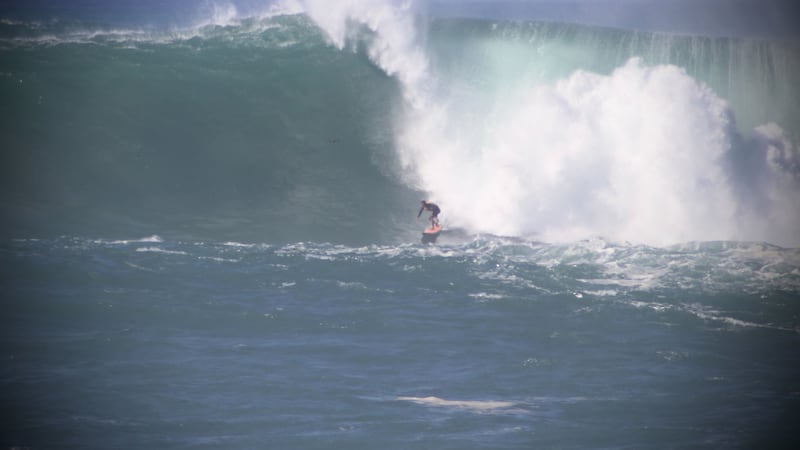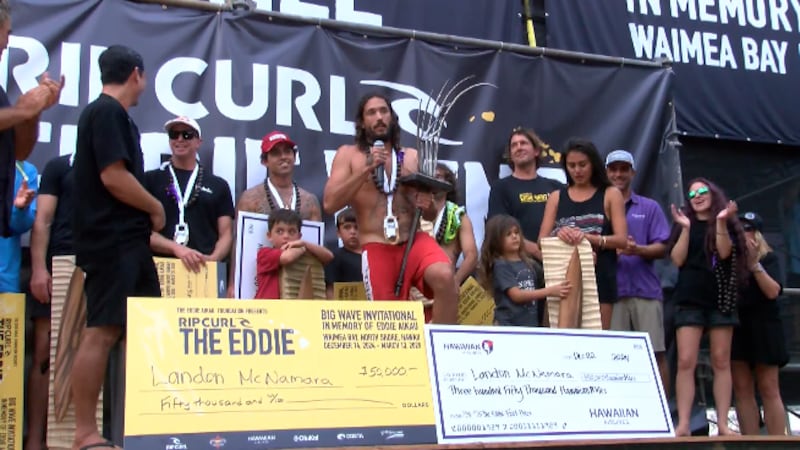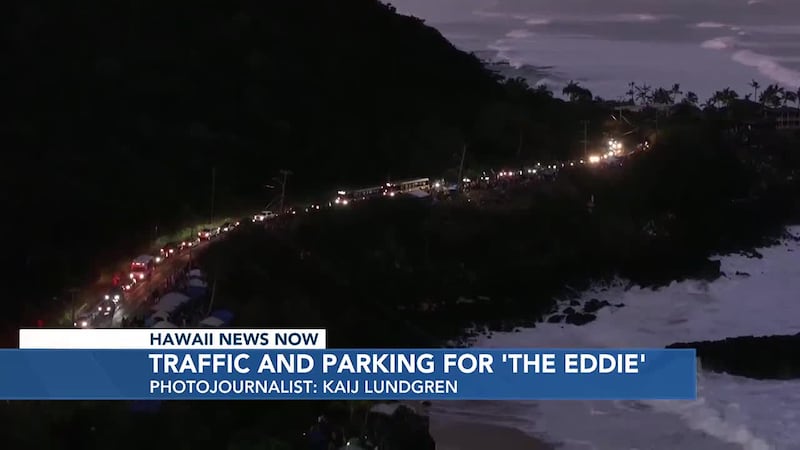Hawaii News Now responds to Maui Police Department accusations

HONOLULU (HawaiiNewsNow) - The Maui Police Department says it has lodged a complaint with the Federal Communications Commission over reports by HNN Investigates about the mishandling of human remains after the Lahaina wildfire.
Hawaii News Now is standing by the stories reported by Allyson Blair; stories that MPD is disputing and calling unsubstantiated.
View our full statement, sent to the Maui Police Department, below:
Letter to Alana K. Pico, Maui Police Department by HNN on Scribd

TIMELINE: HNN Investigates Maui Police Department’s handling of Lahaina fire remains
October 2023
HNN Investigates first learned about Greyson Abarra’s claims in October 2023. At the time, his company, Grey Tech LLC, was contracted by the Maui Police Department to provide postmortem services for the island’s departed. Records show his company served the department in that capacity for 12 years.
In an hours-long phone conversation, Abarra shared his concerns with Allyson Blair regarding the Maui Police Department’s handling of human remains.
On Oct. 9, 2023, Abarra sent HNN Investigates an email with copies of Maui’s Mass Fatality Operations Plan, the County of Maui Mass Fatality Management Field Operations Guide and a copy of the 2015 Maui Mass Fatality/ Mass Casualty Tabletop Exercise.

In a follow-up email, Blair responded asking if Abarra was willing to do an interview. Abarra verbally related he was under contract with the Maui Police Department and could not speak publicly.
Oct. 9, 2023 by HNN
At the time, HNN investigates could not independently confirm Abarra’s claims and decided to hold off on the story until additional information became available.
July 2024
In the weeks after MPD ended its contract with Abarra citing the convenience clause, the morgue contractor again contacted HNN Investigates saying he could now speak publicly on the matter.
June 19, 2024 by HNN on Scribd
HNN Investigates spent several weeks fact checking Abarra’s claims against information that had been released in MPD’s Preliminary After-Action Report and the attorney general’s investigation.
READ MORE:
- Maui Police Department Preliminary After-Action Report
- Department of the Attorney General Maui Wildfire Investigation Resource Page
September 2024
On Sept. 8, 2024, Abarra provided more documents for HNN Investigates to review.

The following day HNN Investigates flew to Maui to conduct an on-camera interview with Abarra.
In the weeks that followed, HNN Investigates pored through MPD interviews that were conducted by members of the Fire Safety Research Institute panel as part of the attorney general’s wildfire investigation, comparing that with what was documented in the MPD preliminary after-action report and Abarra’s interview.
October 2024
On Oct. 3, HNN Investigates conducted an on-camera interview (via Zoom) with Christopher Napoleon. Photographs show the Grey Tech employee was on the ground in Lahaina after the disaster. His interview corroborated many of Abarra’s claims.
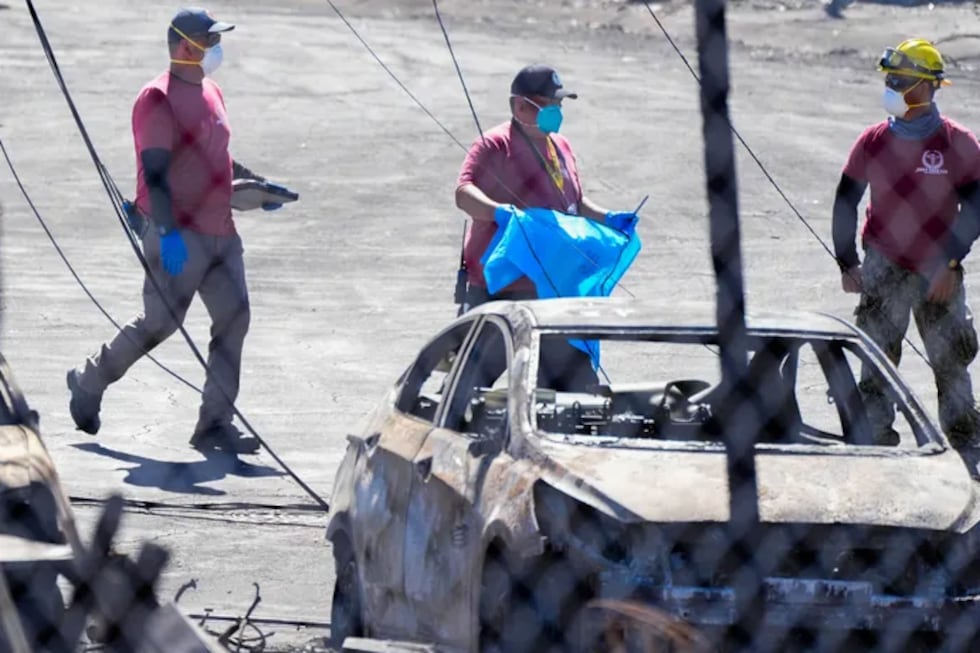
That same day HNN Investigates submitted a media request to leadership at Maui PD requesting an on-camera interview with Chief John Pelletier. The request laid out specifics of what the interview would be about.
Oct. 3, 2024 by HNN
On Oct. 4, HNN Investigates sent a follow-up email to MPD imploring the department to provide a response expressing the importance of providing the community with the department’s perspective.
Oct. 4, 2024 by HNN
Five hours after HNN Investigates deadline had passed, MPD provided the following statement.
Oct. 4, 2024 by HNN
In response to answers provided by MPD, HNN Investigates sent the department a list of follow up questions that same day.
Oct. 4, 2024 by HNN
On Oct. 7, the department declined to answer our questions citing an investigation saying no further information was available.
Oct. 7, 2024 by HNN
On Oct. 8, HNN Investigates aired part one of a two-part series. This story focused on MPD’s handling of remains following the Lahaina fire.
VIEW: Mishandling of human remains: Local forensic company breaks silence on Lahaina disaster response
On Oct. 9, HNN Investigates aired part two of the series. The story focused on Abarra’s claim MPD owes his company more than a quarter-million dollars for work performed in the wake of the disaster.
VIEW: Maui PD won’t discuss allegations it owes forensic morgue contractor more than $270K
Over the past six weeks HNN Investigates confirmed the following:
On Aug. 9, the morning after the disaster, MPD leadership appointed an acting captain with no mass casualty training or experience as Lahaina’s daytime incident commander.
The statement was confirmed using that acting captain’s interview.
Jeremy Palone-Delatore told members of the Fire Safety Research Institute panel as a part of the attorney general’s wildfire investigation, “When I took over, there were a total of three. By the end of my first day, it was over 50.”
The interviewer asked, “human remains?”
Palone-Delatore responded, “Correct.”
He went on to say, “We are identifying them and recovering them. So it kind of just evolved into officers picking up human remains and then transporting them to Lahaina Civic Center. Because Grey Tech, who’s the person that’s responsible for picking up the bodies, it wouldn’t be effective to have them keep coming. One. Get called. One, one, one. So we had to have a mass staging area.”
The interviewer asked Palone-Delatore if he had any experience, training or certifications for large incidents like this one that he brought with him.
Palone-Delatore responded, “As far as mass casualty events or training? No sir.”
Here’s a portion of that interview:
In addition to police officers, MPD ordered officer recruits—still in training—to recover human remains.
HNN Investigates confirmed this statement through both Palone-Deltore’s interview along with a second interview conducted as part of the attorney general wildfire investigation.
A Maui police detective spoke to the department’s use of officer recruits.
Detective Matt Bigoss said:
“That was supposed to be our second day of report writing with the recruit class. Well that got, I mean that was canceled pretty early on. So when I got out to Lahaina, I got onto Lahainaluna Road, I remember seeing all these, they all wear light color blue shirts. So we were, our regular officers were dark blue and they were these light blue shirts. I just remember looking, there’s like 15 or however many of them, like what the hell are these guys doing out here? But they were there and they were helping, so yeah.”
HNN Investigates confirmed recovery processes and procedures critical to accurately documenting the location of a person’s death and keeping those remains separate so they’re not lost or confused with other sets of remains weren’t followed.
Maui County’s Mass Fatality Operations Plan states at the time of discovery, each person who perished:
- Needed to be assigned a unique ID number. (page C-3, Appendix C, Field or Disaster Site, 1-c: “In the field, all individual remains must be given their own number.”)
- Have photographs taken. (page 52, 10.18.1. Photography Team: “Photographing each set of HR is essential to morgue processing. The contents of every HR bag must be photographed whether it is an intact body or a small fragment.”)
- Have GPS coordinates taken (page 43, 9.7.2. Discovery of Human Remains: “As rescue units locate human remains, the location should be marked and GPS coordinates noted.”)
Maui County’s Mass Fatality Management Field Operations Guide states:
- Remains placed in a body bag or zip lock bag (page 29: “Collect whole bodies in body bags and body fragments in zip-lock bags.”)
HNN Investigates confirmed that ID numbers weren’t assigned until fire victims' remains had been moved at least two times by cross-referencing a statement Greyson Abarra made in an interview with a statement made by Maui Police Department spokesperson Alana Pico.
In an interview, Greyson told HNN Investigates, “I had to assign these unique ID numbers as I was imaging with the hospital.” [Starting at 4:46 in the video below.]
In a statement, MPD said, “Each recovery was assigned a unique case number, generated chronologically as the remains were x-rayed.”
That same MPD statement notes, “As stated in our after-action report, during the recovery operation, remains were located, secured, and transported to a centralized site for pickup and transfer to the morgue.”
Oct. 20, 2024 by HNN on Scribd
HNN Investigates confirmed Abarra’s claim that photographs were not taken in every case “and the ones that were weren’t always useful” through MPD’s preliminary after-action report and a statement made by Detective Matt Bigoss during an interview conducted as part of the attorney general’s wildfire investigation.
Bigoss stated, “I don’t know if I told it in the station, or if I said it on the radio, but it came out, and basically said like, ‘Hey, if you guys find something, call the location, time, whether or not you think it’s male or female on the radio. So we can have a record of that on the radio.’
“Then I had told the guys who were with me, ‘Hey, we’re going to put them in — you know, recovery, body, remains, whatever, find it, put it in the bag. On the outside of the bag, write something to denote the date, the time, the location.’ Because at this point, we came to the conclusion — we basically needed to recover them and take them to a centralized location so that it would be easier for the morgue people to pick them up.”
That detective went on to say, “I mean, there were some that were missed for sure. But for the most part, the guys were pretty good about taking pictures and documenting and writing notes about what they saw.”
Meanwhile, recommendation #20 in MPD’s after-action report states: “Continue death investigation education for MPD officers, as some of the initial documentation and photography could have offered more context with better coverage and details.”
HNN Investigates confirmed GPS coordinates weren’t taken in every case by cross-referencing the interview with MPD Detective Bigoss, above, and an interview with Grey Tech removal technician Christopher Napoleon, below.
Napoleon said, “It’s very important, especially for the families that were missing their loved ones, that we had GPS coordinates.
“We were working with the DMORT (Disaster Mortuary Operational Response Team) team and the autopsy doctors who needed all of that information and it wasn’t getting done.”
Abarra told HNN Investigates he wasn’t provided with GPS coordinates for many of the cases. He says in some instances he’d find cross streets or an address written on body bags.
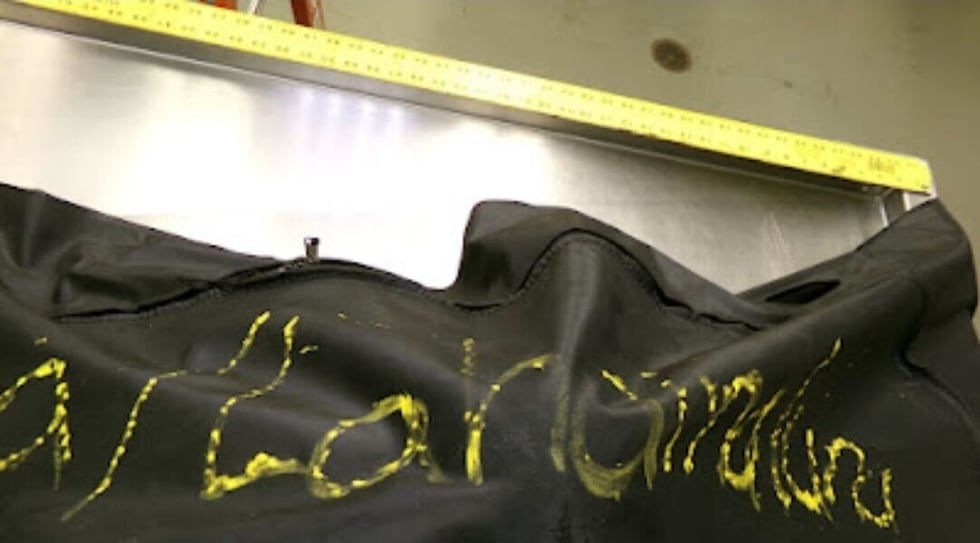
HNN Investigates confirmed instances where body bags weren’t used to move decedents from their final resting place by cross-referencing interviews with Abarra and a statement made by MPD spokesperson Alana Pico.
Abarra said when he arrived at the Lahaina Civic Center the morning of Aug. 9, he was directed to a truck with the remains of six people in the back.
“Bodies were not in postmortem pouches,” he said. “We had to put them into proper postmortem pouches.”
Meanwhile, a statement provided by MPD spokesperson Alana Pico said, “During the earliest phase of the recovery process on August 9th, while the fire response was still active, including searches for any survivors, disaster pouches were not yet available in sufficient quantity in Lahaina – as the morgue transport contractor brings pouches during response.”
Oct. 20, 2024 by HNN on Scribd
Emails obtained by HNN Investigates reveal an apparent mix-up in which additional bones from a victim were found three weeks after MPD had released that man’s remains to a mortuary. According to those emails the newly discover bones could not be separated from other victims remains, something the family says they were never told.
The documents are included in this story:
Additional coverage:
- Emotions run high as Maui Police Commission hears testimony over handling of fire remains
- National watchdog calls for federal probe into Maui police’s handling of remains following Lahaina fire
- Emails reveal Maui Police Department still holds portion of Lahaina fire victim’s remains
- Watchdog group launches social media campaign publicizing details on Maui police commission meeting
- Morgue contractor suing Maui police for alleged unpaid bills after Lahaina fire
- New Maui police statement reveals county protocol violations in Lahaina fire victim recovery
- Maui PD boasts ‘Coroner’s Office’ award following reports it mishandled fire victims’ remains
- Watchdog group demands answers from MPD chief amid reports department mishandled Lahaina victims’ remains
- Maui PD won’t discuss allegations it owes forensic morgue contractor more than $270K
- Mishandling of human remains: Local forensic company breaks silence on Lahaina disaster response
Copyright 2024 Hawaii News Now. All rights reserved.




